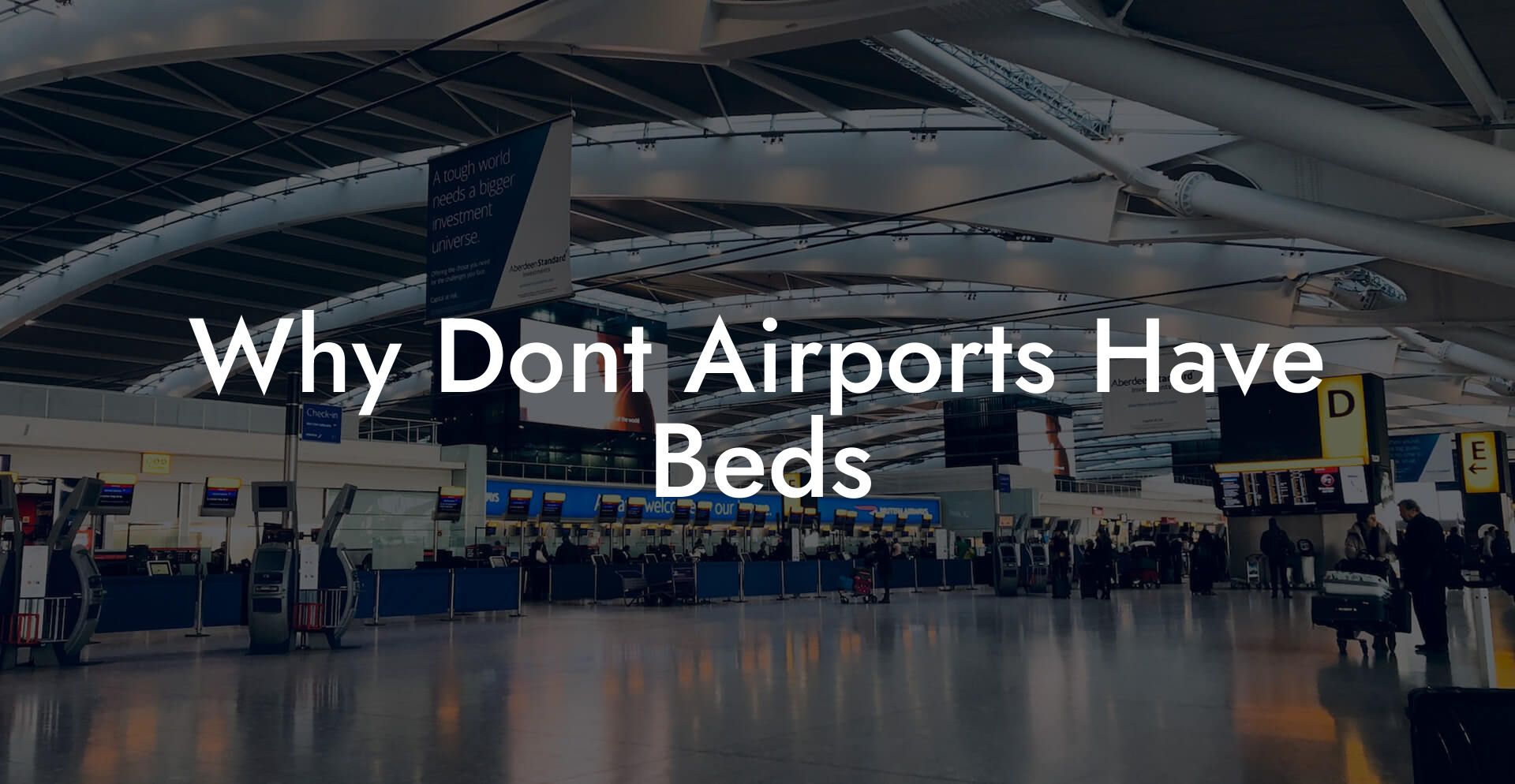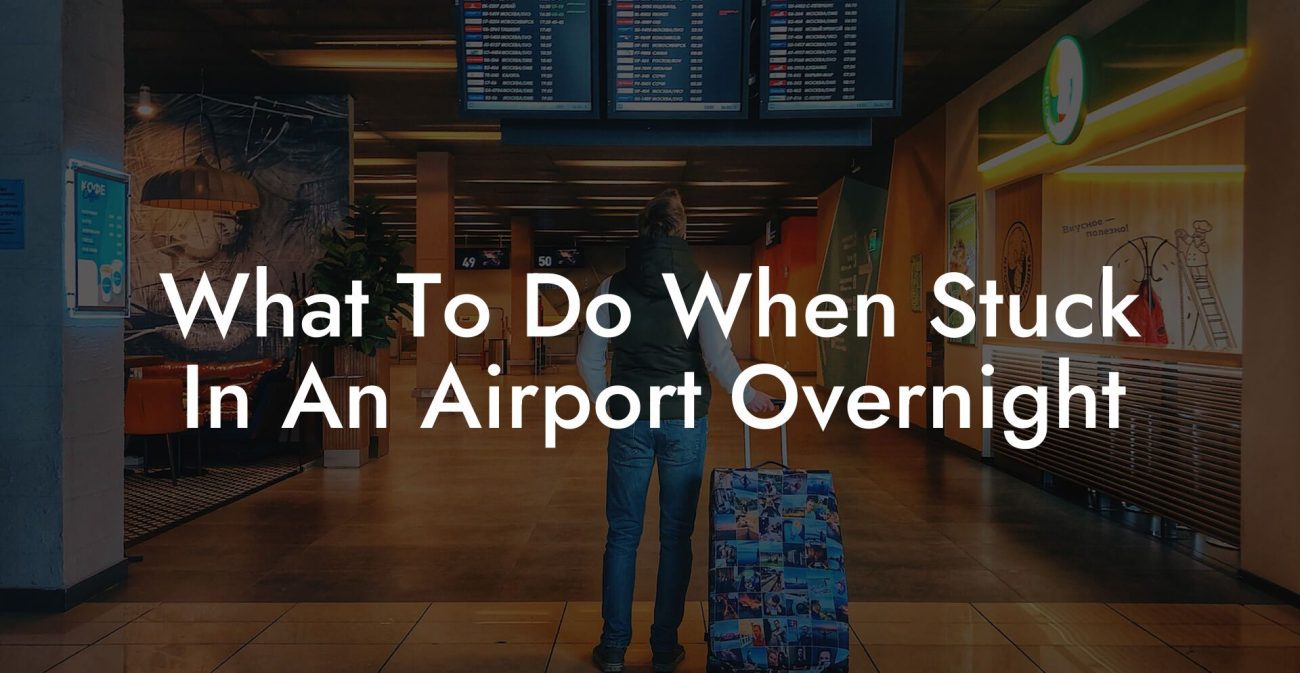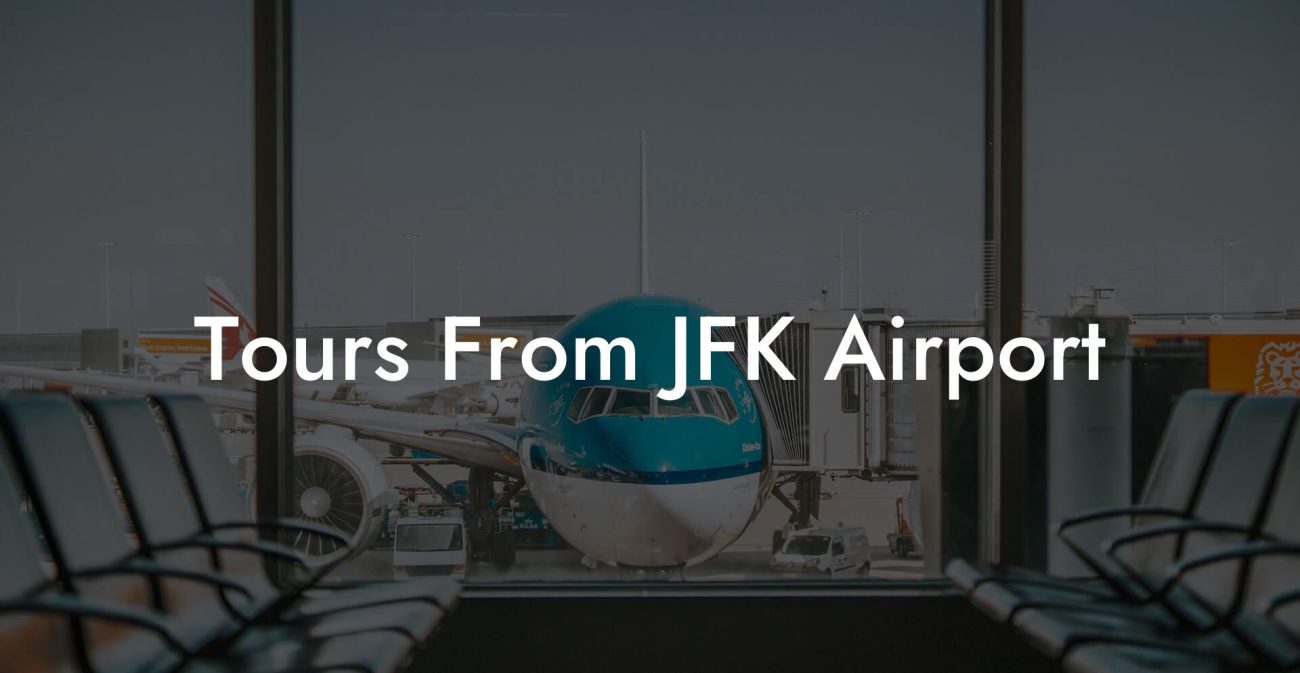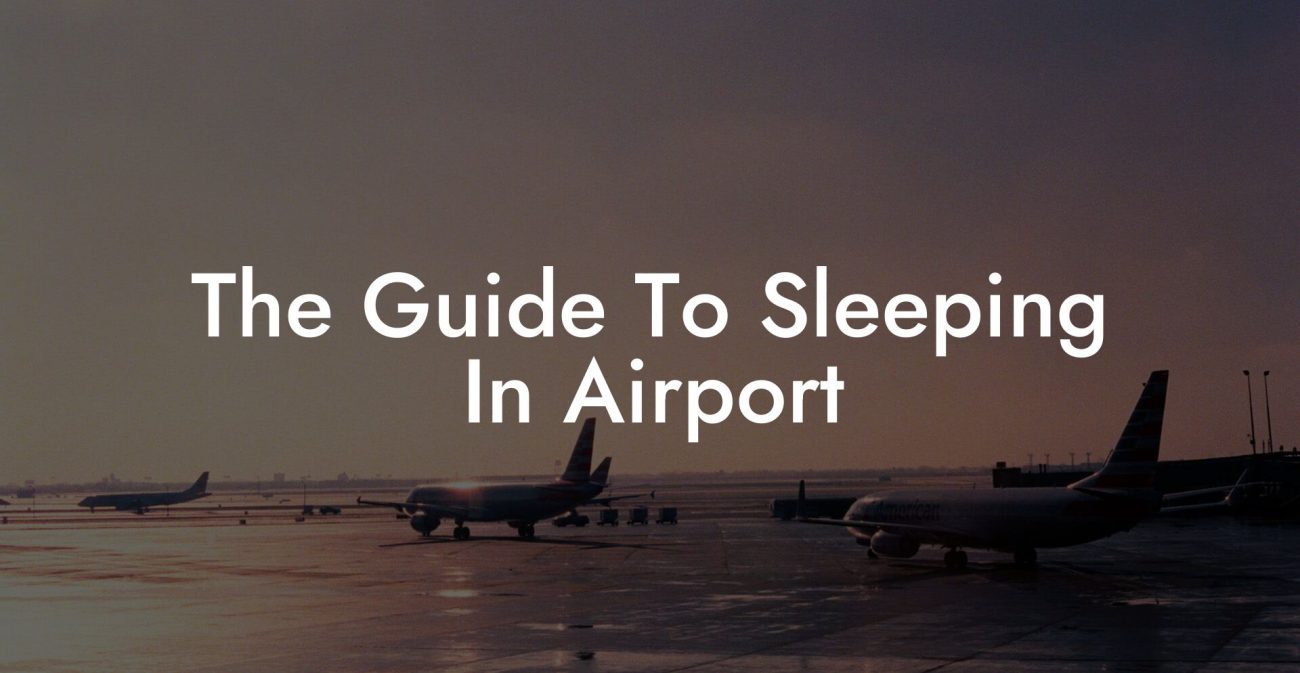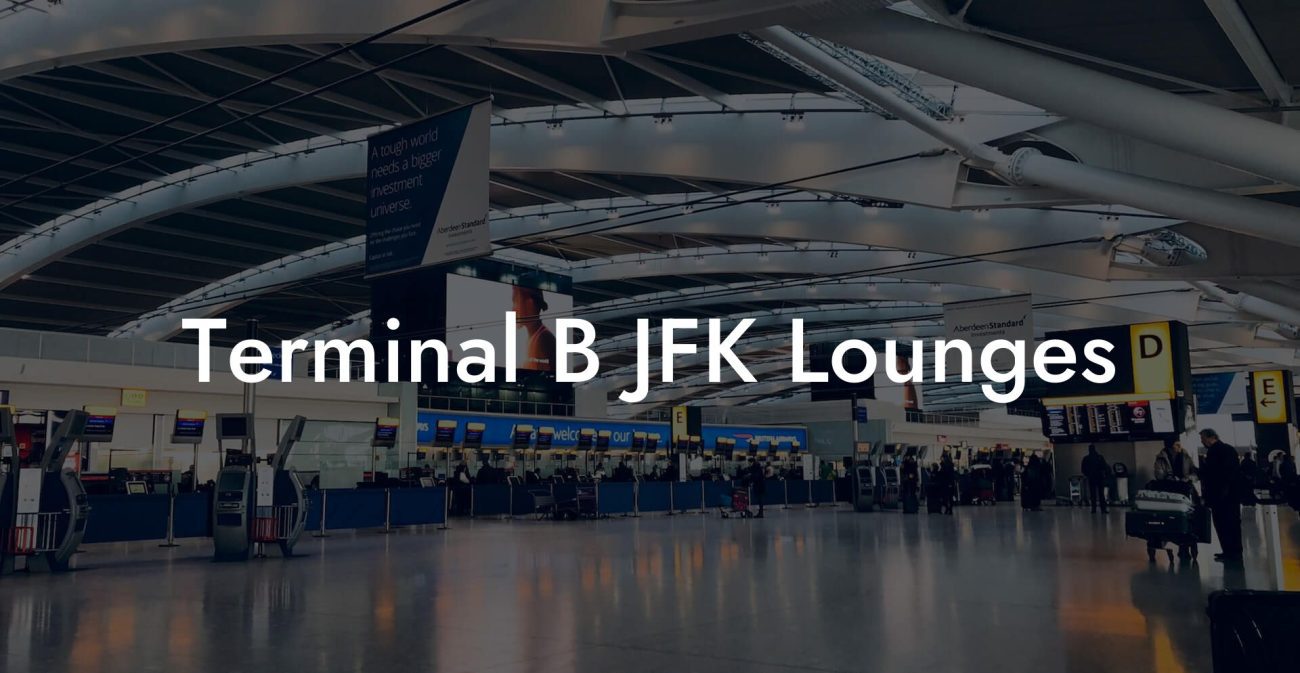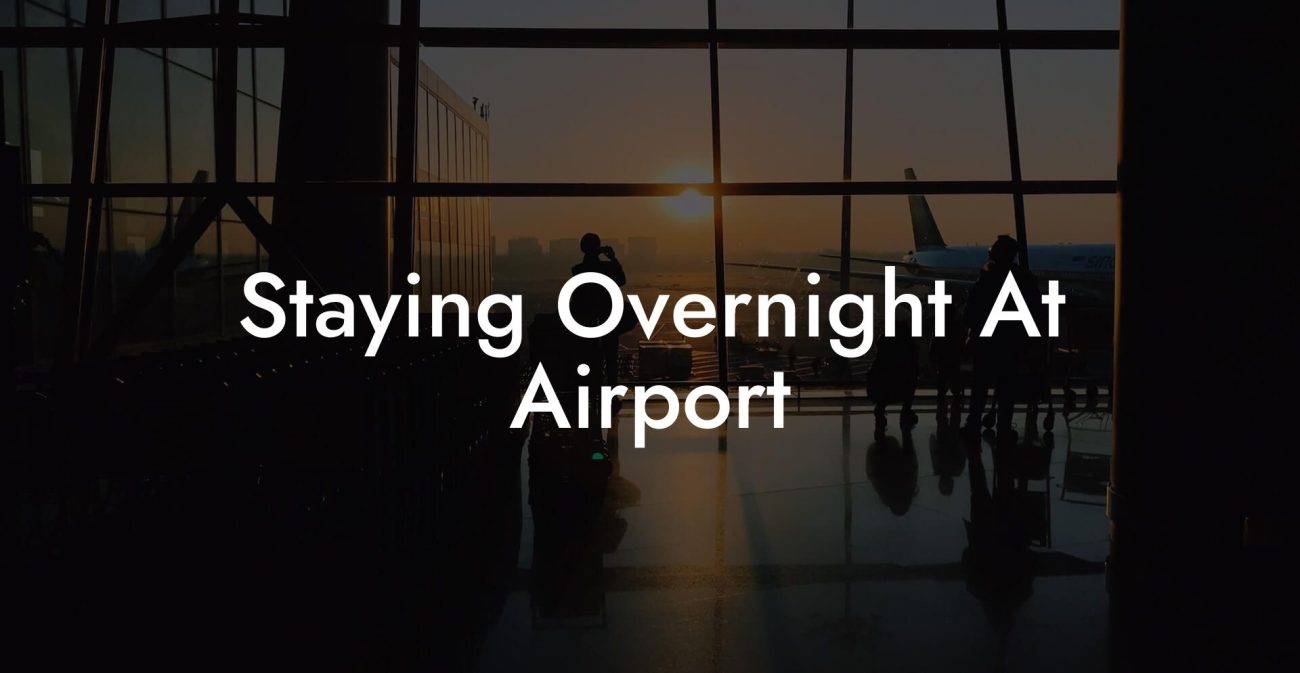Ever wondered why airports, those bustling hubs of transit and adventure, rarely feature hotel-style comfy beds? You might be scratching your head—or worse, nodding off in a less-than-ideal airport chair—while marveling at the high-tech sleeping pods and ultra-sleek lounges that airports do offer. Dive into this exploration of airport design, where space, security, economics, and culture collide, leaving most terminals bed-free (for now) while still catering to Gen-Z and millennial wanderers looking for that oh-so-sweet spot to catch a few z’s.
Quick Links to Useful Sections
- The Surprising Truth Behind Why Airports Don’t Have Beds
- The Space Conundrum: Why Beds Just Don’t Fit
- Security, Privacy, and Comfort: The Balancing Act
- Comfort Solutions: The Rise of Airport Sleeping Pods and Lounges
- The Economics of Airport Design: Cost vs. Benefit
- Cultural and Social Factors: A No-Bed Policy in a Bustling World
- Traveler Tales: Adventures in Airport Sleep
- Expert Opinions: Redefining Comfort and Functionality in Transit
- Step-by-Step Guide for Maximizing Sleep in a No-Bed Environment
- Step 1: Scout the Terminal Ahead of Time
- Step 2: Pack the Essentials
- Step 3: Arrive Early and Secure a Spot
- Step 4: Use Technology to Your Advantage
- Step 5: Embrace Micro-Naps
- Step 6: Experiment with Different Areas
- Resources and Community Support: Your Next Steps
- FAQs About Airport Sleeping Solutions
- Your Path to a Smarter, More Restful Travel Experience
The Surprising Truth Behind Why Airports Don’t Have Beds
On the surface, it might seem bizarre. After all, if you’re spending hours waiting for your next flight, wouldn’t a plush bed be the ultimate travel perk? However, the reality is more complex. Airports are not hotels; they’re dynamic transit hubs that move millions of people daily while juggling strict security requirements, tight space constraints, and the high stakes of efficient operations. While some modern airports have experimented with sleep pods and lounge nooks, traditional beds are almost never a fixture.
The design philosophy behind airports is driven by functionality and agility. Every square foot is meticulously planned to ensure check-in counters, security checkpoints, and retail spaces all coexist within a bustling ecosystem. Beds, which might seem like a minor amenity to the exhausted traveler, can actually disrupt the harmonious flow of the terminal. Instead, airports aim to offer seating solutions that accommodate both the short wait and the occasional long layover, all while keeping an eye on security and passenger flow.
In recent years, however, the travel industry has seen a surge of innovation with airport sleeping pods and designated napping zones emerging in select airports around the globe. These cool, futuristic alternatives are designed specifically for the modern traveler’s on-the-go lifestyle. So, when you see those sleek pods with privacy curtains and charging ports, remember: they’re the product of careful planning, a dash of creative genius, and a whole lot of passenger demand for comfort in a world that rarely stops.
The Space Conundrum: Why Beds Just Don’t Fit
Space is the heart of any major airport, and every inch is accounted for. Unlike hotels or airports that resemble sprawling indoor cities, terminals are designed to funnel a vast number of travelers efficiently from one point to another. The reality is that traditional beds take up too much room and are not as flexible or scalable as the seating arrangements currently in use.
Consider the design challenge: terminals are built with an emphasis on open spaces, clear sightlines, and smooth passenger circulation. Beds, which have fixed dimensions and require a dedicated area, can create bottlenecks. When flight schedules change or when there’s an unexpected surge of passengers—like during a holiday season or weather-disrupted travel—a static sleeping area can quickly become obsolete or even a hindrance.
Architects and planners opt for modular seating and multi-purpose furniture that can be reconfigured as needed. Benches, recliners, and even innovative airport sleeping pods are designed to maximize space use. They can be tucked away when not in demand and transformed into more useful seating as the crowds shift. This adaptive design strategy is a smart response to the constant ebb and flow of airport traffic, ensuring that limited space is always used in the most efficient manner.
In essence, the challenge isn’t just about comfort—it’s about maintaining a balance between efficient transit flow and meeting the diverse needs of passengers. Beds could potentially compromise that balance by taking up real estate that might be better utilized as part of a larger, more dynamic seating configuration.
Security, Privacy, and Comfort: The Balancing Act
If space wasn’t a concern, you might wonder, why not bring in beds for a quick power nap or a deep slumber? One of the paramount challenges is balancing security with passenger comfort. Airports are sensitive environments where privacy often clashes with the need for constant surveillance and control.
Traditional beds inherently invite relaxation, which is great for a hotel—but not so much for an airport, where every inch must be monitored both for safety and operational efficiency. Security protocols require unobstructed views and easily accessible emergency exits. Beds, with their inherent design for seclusion and restfulness, can conflict with these security needs by hiding a traveler’s full view of their surroundings.
Furthermore, privacy and security in airports are two sides of the same coin. For instance, designated napping zones and sleeping pods come with additional layers of design that help maintain privacy while still allowing for easy supervision. These pods are constructed with portable partitions, smart lighting, and integrated security cameras—features that traditional beds simply don’t offer.
The decision to stick with adaptable seating rather than conventional beds is also a nod to passenger behavior. Modern travelers value connectivity, quick access to charging stations, and the ability to remain mobile and alert. Integrating tech-savvy features into seating rather than beds ensures that passengers can comfortably work, relax, or even sleep—in a short burst—without compromising overall security.
Comfort Solutions: The Rise of Airport Sleeping Pods and Lounges
With the growing demand for a quick, quality rest between flights, many airports are now experimenting with ingenious alternatives to traditional beds. Enter airport sleeping pods—a cutting-edge solution that marries futuristic design with practical functionality. These compact, private sleep stations offer an oasis of calm in the midst of terminal chaos.
Airport sleeping pods often feature a reclining seat that can be transformed into a near-flat bed, high-speed charging ports, ambient lighting, and soundproofing elements. They’re designed with the tech-savvy traveler in mind, creating a seamless blend of comfort and functionality. Unlike traditional beds, these pods can be modularly integrated into open spaces, ensuring that when they’re not in use, the area can still accommodate large groups.
In addition to pods, many airports have revamped their lounges to offer more than traditional seating. These lounges boast comfortable recliners, massage chairs, and even quiet zones where travelers can unwind. Some premium lounges even provide mini-rooms with reclining chairs that mimic the comfort of a real bed without actually taking up as much space.
This innovative approach reflects a broader shift in passenger expectations—where technology, design, and comfort converge. Travelers no longer need to worry about missing that essential power nap; the wearable tech revolution and mobile connectivity have made it possible to catch sleep in bursts, regain energy quickly, and stay productive on the go.
The Economics of Airport Design: Cost vs. Benefit
Airports are massive business operations where every design decision is weighed heavily against cost, efficiency, and passenger satisfaction. Incorporating traditional beds into terminal design might seem like a great way to boost passenger comfort, but the economics don’t always add up.
From an operational standpoint, beds require a significant investment—not just in the furniture itself, but in the supportive infrastructure needed to accommodate them. This includes additional space allocation, maintenance costs, enhanced cleaning protocols, and revised security measures. The return on investment can be questionable, particularly when alternative seating solutions can be repurposed or reconfigured based on demand.
Moreover, airport budgets are finely tuned to prioritize projects that yield broad benefits. With millions of passengers passing through each day, each square foot is allocated to areas that maximize accessibility, retail revenue, and operational efficiency. Traditional beds, despite their allure, might not generate the same economic impact as shops, dining areas, or even charging kiosks.
In contrast, the rise of multipurpose sleeping pods and adjustable lounge areas exemplifies clever cost management. These solutions are designed to enhance the passenger experience without demanding extensive redirection of resources. By investing in cutting-edge, flexible designs, airports can offer comfort into the future while keeping expenses in check.
When you step back and consider the economics, it becomes evident that the no-bed policy is a calculated decision—a blend of practicality, financial responsibility, and an eye toward the future. It’s a reminder that sometimes, the best innovation isn’t more of the same, but rather a thoughtful reimagining of what travel comfort can look like in the modern era.
Cultural and Social Factors: A No-Bed Policy in a Bustling World
Travel today isn’t just about moving from point A to point B—it’s about the experiences, convenience, and culture that come with it. Airports have become microcosms of urban life, reflecting global diversity and the evolving expectations of modern society. In this context, a traditional bed might actually feel out of place among sleek digital displays and interactive art installations.
Culturally, the way people view rest has transformed dramatically. Gen-Z and millennials prefer adaptable, high-tech environments that offer multi-functional use. Rather than having a set bed for sleep, the modern traveler might rather settle into a cozy lounge with versatile seating arrangements that double as workstations, social hubs, or relaxation zones.
Additionally, the social vibe at airports is shifting. Passengers appreciate transparency and connectivity rather than the isolation that a traditional sleeping area might encourage. Open-plan waiting areas promote mingling, collaboration, and even spontaneous travel tips exchanges—dynamics that conventional beds might dampen with their inherently solitary design.
From a design perspective, airports are increasingly seen as public spaces that should encourage fluidity, accessibility, and interactivity. The choice to sidestep conventional beds is, in part, a nod to these emerging cultural expectations. Instead of demarcating rigid sleeping areas, airports are evolving into spaces that surprise and delight the traveler at every turn—whether it’s through an art installation in the departure hall or a cleverly designed napping pod tucked away for the weary.
Traveler Tales: Adventures in Airport Sleep
Let’s be real—if you’ve ever experienced the unpredictable joys of airport sleep, you’re part of an exclusive club. Some of the best travel stories come from those unexpected naps in airport terminals, where a cozy bench or a smartly designed sleeping pod turns hours of waiting into treasured memories.
For instance, imagine landing in a bustling international hub with a notoriously long layover. Instead of groaning at the thought of sleeping on a hard bench, you discover an array of airport lounges, each boasting innovative sleeping solutions. One traveler described her experience snuggling into a futuristic pod with a built-in noise-cancelling system, where she dozed off to the gentle hum of ambient music and woke up feeling surprisingly refreshed—even if just for an hour.
Then there’s the thrill-seeker who once boarded a red-eye flight and opted for the ever-popular “sleep in the terminal” challenge. Armed with nothing but a trendy travel pillow and a sense of humor, he transformed a cramped seating area into his little sanctuary for a quick catnap. His later social media posts turned into a viral tribute to the inventive spirit of airport life—complete with tips on the best corners to snooze in without missing your flight.
These real-life experiences underscore a key takeaway: sleep in airports isn’t just about clocking a few hours—it’s about embracing the adventure. Whether it’s squeezing comfort into a transient space or rethinking what “rest” means on the go, every traveler ends up with a story to tell. And isn’t that what modern travel is all about?
Expert Opinions: Redefining Comfort and Functionality in Transit
Industry experts and airport planners have weighed in on the ongoing debate: why don’t airports have beds? The consensus is clear—a blend of multifaceted demands and future-forward innovation shapes the modern airport’s landscape. Experts argue that while beds signal luxury and rest, they also signal static design—a concept that falls flat against the backdrop of an ever-evolving transit hub.
Urban planners point out that airports are essentially the arteries of international commerce and culture. Every design element, from the seating to the subtle ambient lighting, has to serve multiple functions at once. For example, innovative seating solutions can transform overnight waits into revitalizing breaks, offering both relaxation and connectivity.
Tech innovators are also joining the conversation, pushing for advancements in sleep technology that incorporate smart materials and adaptive functions. Imagine a seat that intuitively senses your posture, adjusts its contours for optimal rest, and even gently vibrates to wake you up before boarding time. These forward-thinking concepts are already in the testing phase in some of today’s most modern airports.
In interviews, several leading architects have declared that the future of airport comfort will be defined by flexibility rather than fixed setups. With emerging trends in biometric security, interactive spaces, and seamless passenger flows, it makes far more sense to invest in multi-use furnishings than to cling to the static idea of a “bed.” This mindset reflects a broader shift towards dynamic, smart environments tailored for the digital age.
Step-by-Step Guide for Maximizing Sleep in a No-Bed Environment
While airport designers may not be lining the terminals with full-sized beds anytime soon, you can still optimize your airport napping experience. Here’s a step-by-step guide for grabbing some quality shut-eye amidst the chaos:
Step 1: Scout the Terminal Ahead of Time
Before your flight, check the airport map or their website for designated rest areas, sleeping pods, or quiet zones. Many airports now provide detailed information on where you can find a comfy corner to relax.
Step 2: Pack the Essentials
Think travel pillows, lightweight blankets, and noise-cancelling headphones. These compact items can make a world of difference when transitioning from a busy gate to a personal oasis.
Step 3: Arrive Early and Secure a Spot
Popular napping zones and sleeping pods can fill up fast, especially during long layovers. Arriving early not only reduces the stress of rushing but alsoensures you get the best spot to catch some rest.
Step 4: Use Technology to Your Advantage
Many airport apps now offer real-time updates on available seating and sleeping spots. Leverage these tools to navigate busy terminals and pinpoint the most peaceful areas.
Step 5: Embrace Micro-Naps
If you can’t score a full-length nap, consider micro-naps. Even a brief 20-30 minute snooze can rejuvenate your energy levels. Set an alarm (or ask a friendly traveler) so you don’t miss important announcements.
Step 6: Experiment with Different Areas
Every terminal is different. Whether it’s a secluded corner near a quiet café or a specially designed pod area, experiment until you find your ideal sleeping solution.
With these tips, you can transform an otherwise stressful layover into a survival guide for airport sleep. Embrace the challenge, get creative, and before you know it, you’ll be a seasoned pro at catching Z’s on the move.
Resources and Community Support: Your Next Steps
Ready to take your airport napping game to the next level? You’re not alone. There’s a thriving community of savvy travelers who share tips, hacks, and reviews on the best places to sleep in airports worldwide. Social media groups, travel blogs, and dedicated apps can be your go-to resources for real-time insights and recommendations.
Connect with a network of globetrotters who have mastered the art of sleeping on the go. Whether you’re looking for the quietest airline lounge, the most innovative sleeping pod design, or just a helpful tip on navigating airport layouts, you’ll find a wealth of support online. Join travel communities on platforms like Instagram, Reddit, or Facebook, and share your own experiences as you discover hidden gems in unexpectedly cozy corners of even the busiest airports.
Additionally, many airports now offer virtual tours and detailed insights into their amenities. Check out the airport’s official website before you travel—it might reveal updates on new sleeping pods, lounge renovations, or exclusive rest zones being piloted in select terminals.
The future of travel comfort is evolving fast, and being part of that conversation means staying informed and engaged with the latest trends in airport design and traveler experiences. Embrace community support, share your journeys, and let your voice help shape the next wave of airport innovations.
FAQs About Airport Sleeping Solutions
Got questions about why airports don’t have beds or how to maximize your comfort during long layovers? We’ve compiled a list of frequently asked questions to help bridge the gap between design constraints and traveler reality.
1. Why don’t airports have traditional hotel beds?
Traditional beds require significant space and fixed layouts, which can disrupt the flexible, high-throughput design of modern airport terminals. Instead, airports use adaptable seating, sleeping pods, and lounge areas that balance comfort with operational efficiency.
2. What are airport sleeping pods?
Airport sleeping pods are compact, private spaces designed for short naps. They typically include reclining seats that convert into near-flat beds, built-in charging stations, ambient lighting, and soundproofing features.
3. How do sleeping pods compare to traditional airport seating?
Sleeping pods offer enhanced privacy and comfort for resting during long layovers, while conventional seating is designed for general wait times and may not support a full, uninterrupted sleep.
4. Are there any tips for sleeping well in an airport?
Yes! Arrive early to secure a good spot, pack travel-friendly sleep aids like noise-cancelling headphones and travel pillows, and consider micro-naps if a full sleep cycle isn’t possible.
5. How is security maintained in rest areas like sleeping pods?
Sleeping pods are designed with security in mind—featuring clear sightlines, integrated surveillance, and strict access protocols to ensure passenger safety while providing a private rest zone.
6. Is there any ongoing innovation to improve sleep options at airports?
Absolutely. Many airports are experimenting with smart furniture, adaptive seating, and digitally integrated lounges to enhance the travel experience while maintaining operational efficiency.
7. Can I find reviews on the best sleeping areas in airports?
Yes, websites, travel blogs, and social media groups often share detailed reviews and user experiences, so you can choose the best option for your next layover.
Your Path to a Smarter, More Restful Travel Experience
The next time you find yourself dreading a long layover or an overnight flight, remember: while traditional beds may not grace every airport terminal, the future of travel comfort is already here. With innovative sleeping pods, adaptable seating, and dynamic lounge designs, airports are transforming into smart transit hubs that cater to the modern traveler’s need for rest, connectivity, and efficiency.
Embrace the challenge of combining functionality and comfort. By understanding the design constraints, economic factors, and cultural shifts that shape airport spaces, you can appreciate the ingenious solutions being crafted every day. Whether it’s indulging in a quick micro-nap in a state-of-the-art sleeping pod or discovering the quietest corner of a bustling terminal, the world of airport sleep is as fascinating as it is essential.
So gear up with your favorite travel accessories, stay connected with fellow globetrotters, and get ready to redefine what “rest” means in today’s high-speed world. Your journey to a smarter, more restful travel experience isn’t just about where you sleep—it’s about how you embrace the innovative spirit of modern airports.
From the hidden gems of international terminals to the cutting-edge comfort solutions that are reshaping travel, the future of sleeping on the move is bright, adaptable, and, most importantly, designed with you in mind. Step into the future of travel, where every pause in your journey could be an opportunity to recharge, connect, and truly savor the moment.
Useful Interruption: Dive deeper into the world of airport sleeping guides with our most popular sections. If there is anything you think is missing or anything you would love for us to write about, just give us a shout.
- General Airport Sleeping Guides
- Travel Gear & Equipment Recommendations
- Regional and Airport-Specific Guides
- Airport Sleeping Pods & Reviews
- Health, Safety, and Comfort Tips for Airport Sleepers
Last week, I decided to try the world-famous "airport sleepover" experience. Imagine this: I'm lying on a bench in Terminal C, surrounded by suitcases that have seen more of the world than I ever will, and a PA system that sounds like a karaoke machine on a sugar rush. I pull out my travel pillow—which, by the way, is more like a sad deflated balloon—and declare, "Tonight, I’m the king of this terminal!"
Soon enough, fellow travelers become my unexpected audience. One guy, fresh off a red-eye, whispers, "Hey, do you think if we sleep long enough, we can catch our flight in our dreams?" I reply, "Sure, and maybe I'll even get an upgrade to first-class in my nap!" The airport lights flicker like a disco ball, and every time someone announces a delayed departure, it’s like a punchline to our impromptu stand-up routine.
As I finally drift off, I dream of a world where boarding passes are like VIP tickets to the best sleepover party ever—a party where the only baggage is the laughter you carry with you. Waking up, I realize the airport is still the same, but I now hold the honorary title of "Terminal Comedian," a title I wear with as much pride as my permanently mismatched socks!

